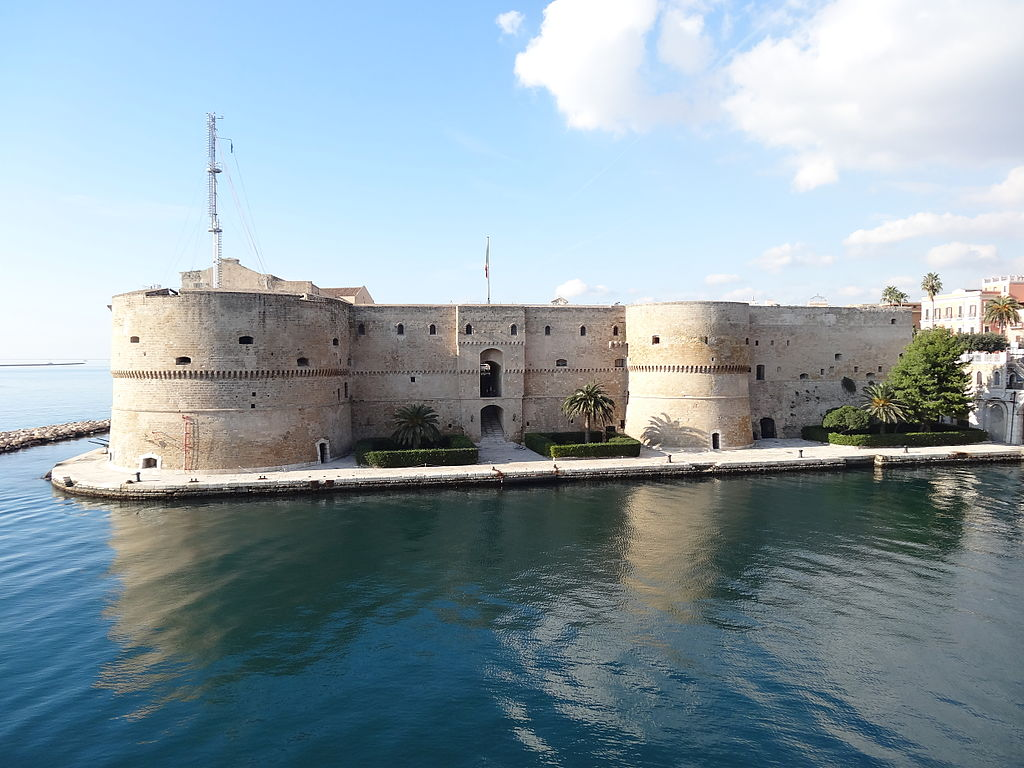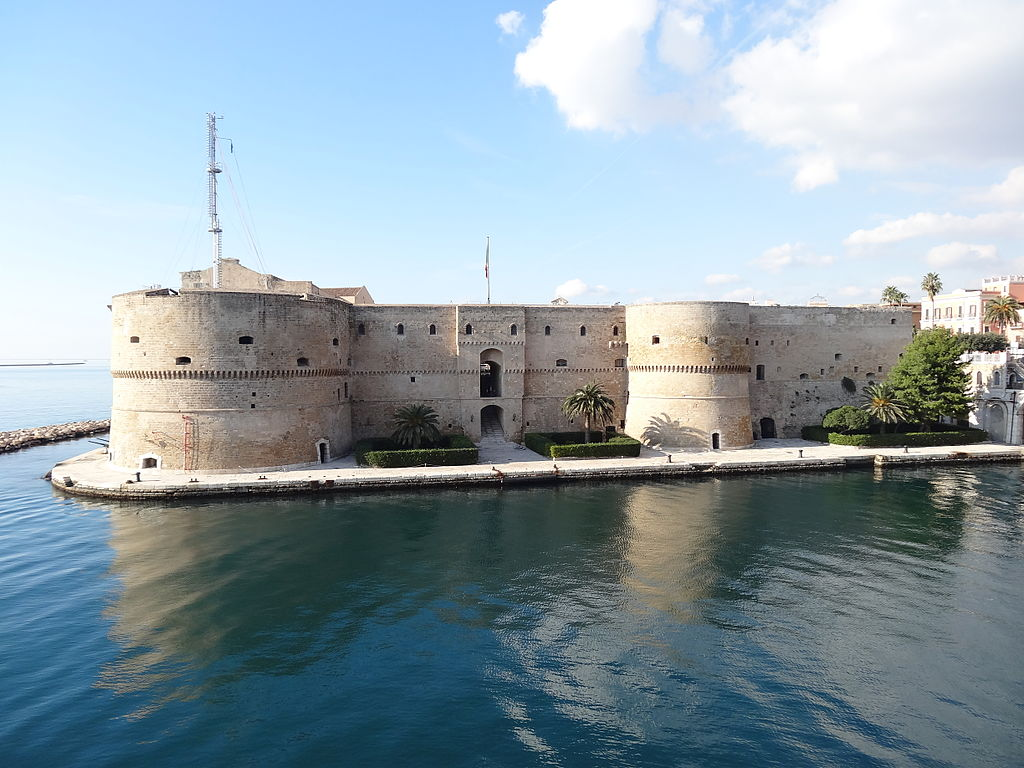
Il Castello Aragonese Di Taranto
Il Castello aragonese di Taranto, chiamato Castel Sant’Angelo, è un bellissimo maniero rinascimentale, eretto su di un antico avvallamento naturale all’estremità dell’isoletta su cui sorge la Città Vecchia. L’aspetto attuale è quello che gli è stato conferito in epoca aragonese. Il Castello fu costruito su una precedente struttura difensiva, la cui fase architettonica più antica è quella bizantina. Grazie a documenti d’archivio del XIII secolo è possibile ricostruirne l’aspetto medievale: un forte dotato di torri quadrangolari pensato per la difesa “piombante”, cioè per il lancio di frecce o altro materiale dalle strette feritoie che si aprivano lungo i bastioni.
Nella seconda meta del XV secolo, quando la tecnologia bellica aveva completamente rivoluzionato la maniera di combattere e difendersi, grazie al largo impiego delle artiglierie e delle armi da fuoco, il Castello si rivelò inadeguato e per questo fu necessario modificarne le caratteristiche architettoniche. Sembra oramai certo che fu il grande architetto Francesco di Giorgio Martini a realizzare i disegni alla base del nuovo impianto del Castello di Taranto. La sua architettura è basata su precise regole geometriche-matematiche che rimandano all’universo culturale, pienamente rinascimentale, dell’architetto senese: quattro torrioni cilindrici sono uniti tra loro da larghe ed eleganti cortine che formano un quadrilatero. Nel corso dei secoli, l’impianto rinascimentale è stato modificato, con l’aggiunta di altre strutture difensive e l’ingrandimento dell’area del fossato. Infine il maniero fu ulteriormente manomesso nel secolo scorso, per trasformarlo in carcere e per far posto alla costruzione del ponte girevole che collega Taranto nuova a Taranto vecchia. Dal 1887 è sede della Marina Militare Italiana, che attualmente garantisce visite guidate gratuite giornaliere all’interno del Castello.

Taranto, Castello aragonese, (foto di Livioandronico2013 – Opera propria, CC BY-SA 3.0, https://commons.wikimedia.org/w/index.php?curid=30324730)
Ufficio Informazioni: 0997753438 Email: infocastelloaragonese@libero.it
